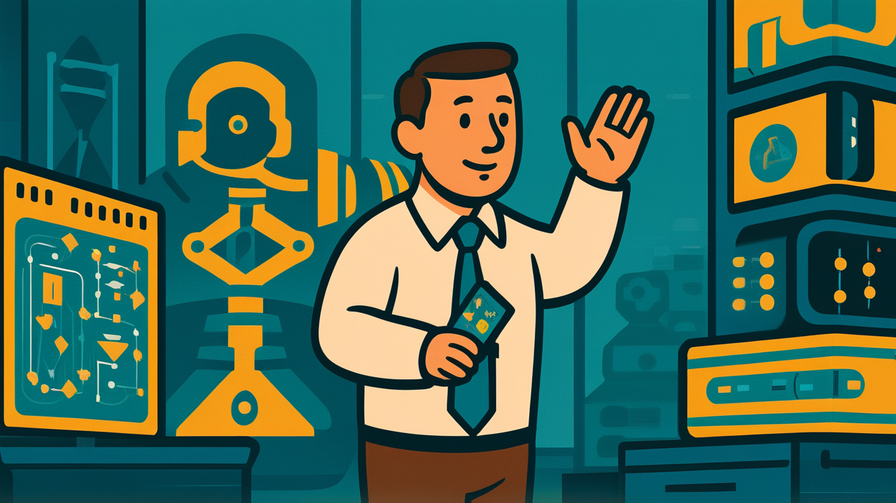[Disclaimer] This article is reconstructed based on information from external sources. Please verify the original source before referring to this content.
News Summary
The following content was published online. A translated summary is presented below. See the source for details.
NVIDIA has collaborated with Black Forest Labs to make their FLUX.1 Kontext AI image editing model run faster and use less computer memory. This breakthrough uses a technique called “quantization” – essentially compressing the AI model to use simpler number formats (like using whole numbers instead of decimals) without significantly reducing image quality. The optimized model runs 2.4 times faster and uses 3 times less memory than the original, making it possible to run on consumer graphics cards like the RTX 5090. FLUX.1 Kontext is special because it allows incremental image editing – users can make multiple changes to an image step by step using simple text prompts, rather than starting over each time. For example, you could first change an image to “Bauhaus style,” then adjust it to “pastel colors” while preserving previous edits. The technical innovation involves using FP4 (4-bit floating point) precision instead of the standard 16-bit, similar to compressing a high-resolution photo to a smaller file size while maintaining visual quality. This advancement democratizes AI image editing by making professional-grade tools accessible on personal computers.
Source: NVIDIA Developer Blog
Our Commentary
Background and Context

AI image generation models have revolutionized digital art, but they face a major challenge: they’re enormous. Modern AI models contain billions of parameters (think of these as the model’s “brain cells”), requiring powerful, expensive computers with massive amounts of memory. This limits access to professional creators and companies with deep pockets.
The memory problem is like trying to fit a library into a backpack – you need to be clever about what you keep and how you store it. Traditional AI models use high-precision numbers (like using 3.14159265… for pi), but researchers discovered that using less precise numbers (like just 3.14) often works nearly as well while taking up much less space.
Expert Analysis
The technique NVIDIA uses, called quantization, is like converting a RAW photo file to JPEG. You lose some theoretical quality, but the practical difference is often invisible while the file size drops dramatically. For AI models, this means converting from 16-bit or 32-bit numbers to just 4-bit numbers.
What makes this particularly clever is how they handle different parts of the model differently. The most important calculations still use higher precision, while less critical operations use the compressed format. It’s like a chef using precise measurements for key ingredients while estimating others – the dish still tastes great but preparation is much faster.
Additional Data and Fact Reinforcement
The numbers tell an impressive story. The optimized model completes image editing tasks in 273 milliseconds on an RTX 5090, compared to 669 milliseconds for the full-precision version – fast enough for real-time editing. Memory usage drops from levels requiring $10,000+ professional cards to amounts available on $1,500 gaming GPUs.
This 3x memory reduction is crucial because AI workflows often require multiple models running simultaneously. A typical creative pipeline might include models for understanding prompts, generating images, and refining results. Smaller models mean artists can run complete workflows on a single consumer GPU rather than renting expensive cloud computing.
Related News
This optimization trend extends across the AI industry. Apple recently announced running language models on iPhones using similar compression techniques. Meta’s Llama models now come in quantized versions for home users. Google uses quantization to fit AI models on Pixel phones.
The democratization of AI tools parallels the digital photography revolution. Just as DSLRs made professional photography accessible to hobbyists, optimized AI models are bringing Hollywood-grade visual effects to bedroom creators. This shift could transform creative industries within years rather than decades.
Summary

NVIDIA’s optimization of FLUX.1 Kontext represents a crucial step in making AI accessible to everyone. By cleverly compressing models without sacrificing quality, they’ve brought professional image editing capabilities to consumer hardware. This breakthrough suggests a future where AI tools are as common as photo filters, empowering millions to create previously impossible art. The real revolution isn’t just faster processing – it’s putting powerful creative tools in everyone’s hands.
Public Reaction
Digital artists celebrate the accessibility, with many upgrading their graphics cards specifically for AI work. Traditional artists express both excitement about new tools and concern about AI-generated art flooding markets. Computer enthusiasts appreciate finally having a practical use for high-end gaming GPUs beyond gaming. Students in art schools debate whether AI tools enhance or diminish creativity.
Frequently Asked Questions
Q: What is quantization in simple terms?
A: It’s like using rounded numbers instead of exact ones. Instead of storing 3.14159, you store 3.1. The result is slightly less accurate but takes much less space.
Q: Will compressed AI models produce worse images?
A: The quality difference is usually invisible to human eyes. It’s like the difference between a 20-megapixel and 18-megapixel photo – technically different but practically the same.
Q: Do I need an expensive computer to use AI image tools?
A: With these optimizations, a mid-range gaming computer with an RTX 4060 or better can run professional AI image tools effectively.


